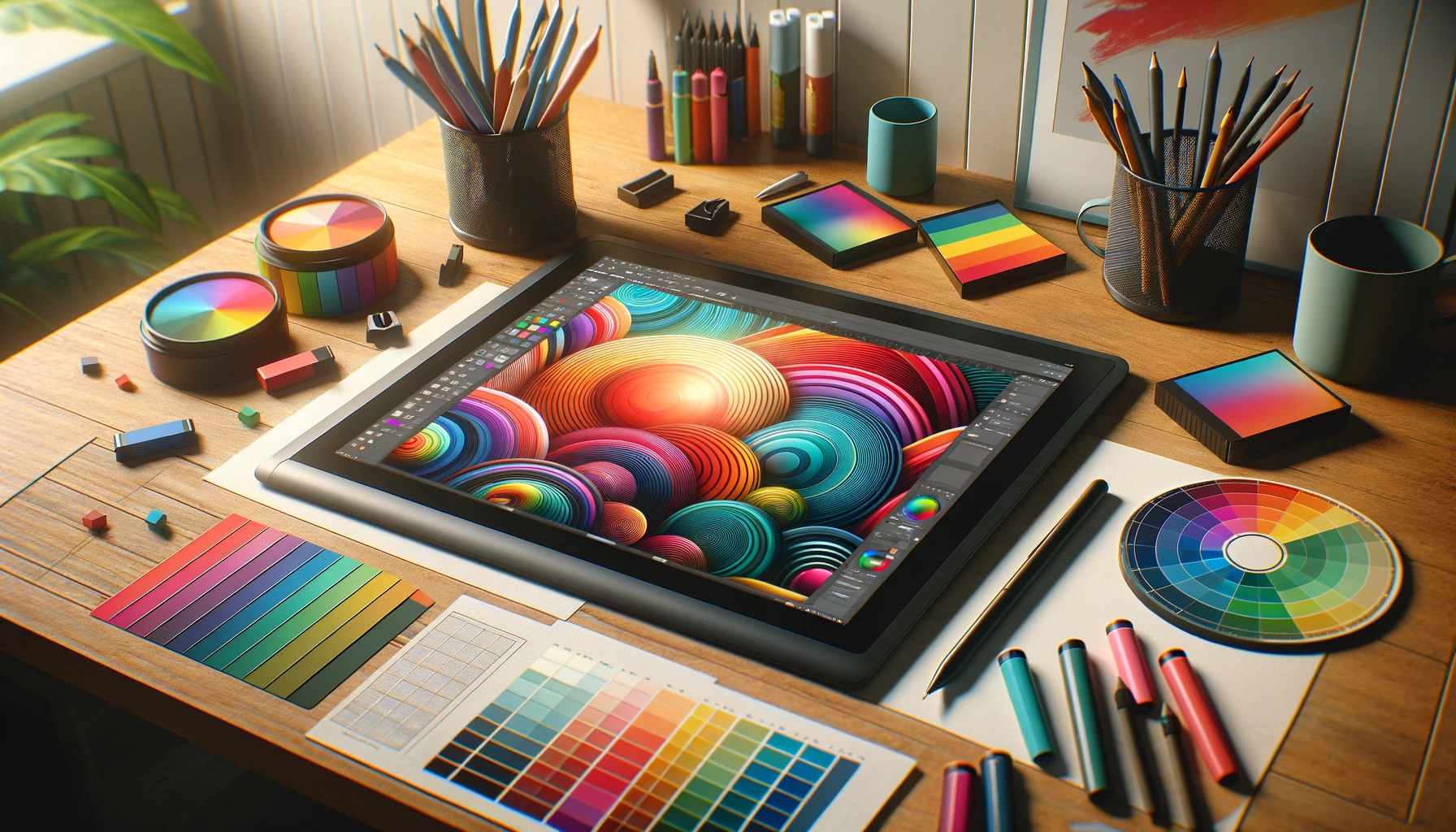How to Apply Color Theory to SVG Images
By Carlos
Published April 1, 2024
 How to Apply Color Theory to SVG Images
How to Apply Color Theory to SVG Images
In the vibrant world of digital design, SVG (Scalable Vector Graphics) stand out for their scalability and flexibility, enabling crisp, resolution-independent graphics across various platforms. Harnessing the power of color theory in SVG creation not only amplifies visual impact but also enhances user experience, emotional response, and brand recognition. Let's delve into practical strategies for integrating color theory into SVG images, transforming them from mere graphics into compelling narratives. Understanding color theory is just the beginning. Integrating these principles with foundational SVG design principles ensures that your graphics are not only visually appealing but also adhere to best practices in design efficiency and effectiveness.
The Foundation of Color Theory in SVG
Before we dive into the application of color theory, understanding its core principles is crucial. Color theory is a framework that guides the use of color in art and design, rooted in the color wheel and the relationships between colors. It encompasses:
- Hue: The pure color, without tint or shade.
- Saturation: The intensity or purity of the color.
- Value: The lightness or darkness of the color.
These elements of color theory serve as the building blocks for crafting visually harmonious SVGs.
Strategies for Color Application
1. Embrace Color Harmony
Creating a visually pleasing SVG involves more than just picking colors randomly. Color harmony uses the color wheel to create balanced and aesthetically pleasing color combinations. Here are some strategies:
- Complementary Colors: Pair colors from opposite sides of the color wheel to create dynamic contrast.
- Analogous Colors: Select colors that are next to each other on the color wheel for a harmonious and cohesive look.
- Triadic Colors: Choose three colors evenly spaced around the color wheel to introduce vibrant yet balanced color schemes.
Specifically for SVG icon design, color harmony plays a critical role in creating icons that are visually cohesive and immediately recognizable. Applying the right color combinations can enhance icon clarity and make interfaces more user-friendly, demonstrating how color theory principles directly impact practical design decisions.
2. Utilize Color for Emotion and Meaning
Colors evoke emotions and carry meanings. Apply this concept to SVG images to convey the right message or mood. For instance:
- Blue: Trust, calmness, and professionalism.
- Red: Energy, passion, and danger.
- Green: Growth, harmony, and environmental consciousness.
Aligning color choices with the intended emotional response or brand identity ensures that SVGs resonate more deeply with viewers. Furthermore, applying color with intention is pivotal in user interface design with SVG. SVGs offer a crisp, responsive option for UI elements. When you choose colors for SVGs in a UI, consider both the emotional impact and functional clarity, ensuring that the interface is intuitive and aligned with the user's expectations.
3. Leverage Contrast for Readability and Focus
Contrast is not just about visibility; it's a powerful tool to guide the viewer's attention and create focus within SVG images. Use high contrast color combinations to make elements stand out and low contrast for background or less important elements. This approach not only enhances readability but also establishes a visual hierarchy, directing viewers to the most critical parts of the SVG.
4. Incorporate Gradients for Depth and Dimension
Gradients, a gradual blend between two or more colors, can add depth, volume, and a touch of realism to SVGs. Use gradients to mimic natural light effects, create smooth transitions, or add visual interest to backgrounds. When applying gradients, be mindful of the color theory principles to ensure harmony and coherence in the color transitions.
While exploring color application, it's crucial to consider the SVG scalability tips to maintain visual integrity across different platforms. Scalability is a hallmark of SVG, and applying color theory with scalability in mind ensures your graphics remain effective and versatile, regardless of size.
5. Adopt Color Trends with Caution
While staying updated with color trends can make SVGs look contemporary, it's essential to use them judiciously. Trends come and go, but the goal should always be to create timeless designs that align with the project's objectives and audience preferences. Use trendy colors as accents or in conjunction with classic, versatile hues for a balanced approach.
6. Test for Accessibility and Inclusivity
Accessibility in design ensures that your SVGs are perceivable and understandable by as broad an audience as possible, including those with visual impairments. Test color combinations for sufficient contrast and consider the implications of color blindness. Tools like color contrast checkers can help in evaluating the accessibility of your color choices.
7. Experiment and Iterate
Finally, the application of color theory to SVG images is not a one-size-fits-all approach. Experimentation and iteration are key to discovering what works best for your specific project. Use A/B testing to gauge user reactions to different color schemes and refine your designs based on feedback and performance data.
Conclusion
Integrating color theory into SVG creation elevates the design from mere graphics to powerful communication tools. By applying the strategies outlined—embracing color harmony, utilizing color for emotion and meaning, leveraging contrast, incorporating gradients, adopting color trends cautiously, testing for accessibility, and experimenting—you can craft SVG images that captivate, communicate, and convert. Remember, color is not just a visual element; it's an essential component of storytelling in digital design. Let your SVGs tell their story, vividly and compellingly, through the strategic application of color theory.